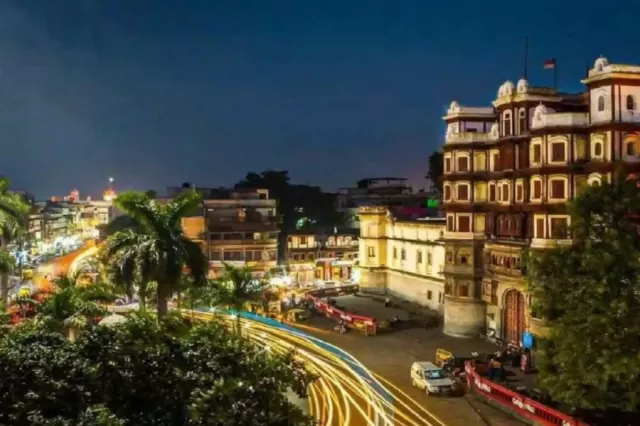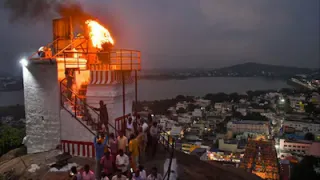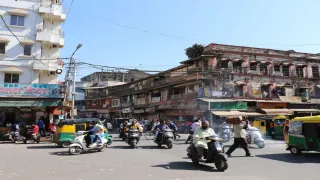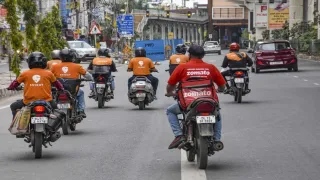On July 17, 2025, the iconic Vigyan Bhawan in New Delhi lit up for a proud national celebration, the Swachh Survekshan 2024-25 Awards. In its 9th edition, India’s largest cleanliness survey recognised the most dedicated cities in the fight for hygiene, sanitation, and sustainability. The awards were conferred by President Smt. Droupadi Murmu, with Union Housing and Urban Affairs Minister Shri Manohar Lal also in attendance. The real showstopper? Indore clinched the top spot once again, claiming the crown of India’s cleanest city for the 8th consecutive year.
But this time, it wasn’t just about one city. A refreshing wave of cleanliness has swept across urban India, from bustling metros like Surat and Navi Mumbai to serene hill towns like Panchgani and Ambikapur. These cities are not just meeting the bar, they’re setting it.
What’s New in Swachh Survekshan 2024-25?

This year’s survey took a smarter, more inclusive turn with the introduction of the Super Swachh League, segmenting cities based on their population size. Rather than a one-size-fits-all approach, cities were divided into five categories, ranging from tiny towns to megacities with populations exceeding one million, ensuring fairness and relevance in comparison.
Over 78 awards were handed out across 4 main categories, evaluated on 10 key cleanliness and service delivery parameters, making it the most structured and tech-backed assessment of urban sanitation yet.
Top 10 Cleanest Cities in India 2025 (As per Swachh Survekshan 2024-25)
| Rank | City | Category | State/UT |
|---|---|---|---|
| 1 | Indore | Million Plus Cities | Madhya Pradesh |
| 2 | Navi Mumbai | Million Plus Cities | Maharashtra |
| 3 | Surat | Million Plus Cities | Gujarat |
| 4 | Noida | Big Cities (3–10 lakh) | Uttar Pradesh |
| 5 | Chandigarh | Big Cities (3–10 lakh) | Chandigarh (UT) |
| 6 | NDMC (Delhi) | Medium Cities (50k–3L) | Delhi |
| 7 | Tirupati | Medium Cities (50k–3L) | Andhra Pradesh |
| 8 | Ambikapur | Medium Cities (50k–3L) | Chhattisgarh |
| 9 | Sasvad | Small Cities (20k–50k) | Maharashtra |
| 10 | Panchgani | Very Small Cities (20k) | Maharashtra |
Why These Cities Deserve the Spotlight?
Indore

Year after year, Indore continues to set an example with its solid waste segregation, community engagement, and public infrastructure. The city's citizens, municipal staff, and administrative policies align to maintain its top position. From door-to-door waste collection and 100% source segregation to advanced composting units and digital monitoring dashboards, Indore’s model is a blend of technology, community engagement, and political will. Every stakeholder, from citizens and sanitation workers to administrators, plays a pivotal role in preserving the city’s status as the national benchmark in cleanliness.
Navi Mumbai and Surat
In Navi Mumbai, cleanliness is not just visual, it’s institutional. The city has invested in solid infrastructure, effective waste processing plants, and citizen awareness campaigns. Its emphasis on green cover, public toilets, and zero-waste zones has made it a model urban habitat.
Surat, once criticised for its unhygienic conditions in the 1990s, has undergone a dramatic transformation. Today, it's a city that exemplifies resilience and innovation in urban governance. Its use of data analytics for garbage tracking, air quality sensors, and streamlined public services makes Surat one of India's smartest and cleanest cities.
Noida and Chandigarh
Noida has emerged as a front-runner in the 'Big Cities' category thanks to its smart surveillance, digital dashboards, and tech-based waste collection. The city authorities have made cleanliness a top civic priority, actively involving resident welfare associations (RWAs) and private partners in its sanitation ecosystem.
Chandigarh, India’s first planned city, leverages its architectural efficiency and environmental consciousness to great effect. The city’s emphasis on green corridors, waste segregation at source, and water recycling systems ensures it consistently ranks among the best. Its active citizen participation in cleanliness drives only strengthens its public sanitation efforts.
NDMC (Delhi)
New Delhi Municipal Council (NDMC), managing central Delhi's prestigious zones like Connaught Place and Lutyens' Delhi, has excelled in digital monitoring, automated garbage collection, and public engagement drives. With a compact area but dense population, NDMC has invested in smart bins, solar energy, and rigorous sanitation audits, securing its position among the top medium-sized cities.
Tirupati and Ambikapur
Tirupati, one of India's holiest cities, has infused its religious identity with a deep commitment to cleanliness. The local municipal body ensures that temple areas and adjoining neighbourhoods maintain high sanitation standards, accommodating the millions of annual pilgrims without compromising hygiene.
Ambikapur, a small city with a big vision, has earned global admiration for its women-led waste management system. The city has established resource recovery centres, where self-help groups run decentralised waste processing operations, achieving zero-waste landfill status. Its unique model proves that even mid-sized cities can deliver world-class sanitation with the right community-driven approach.
Panchgani and Sasvad
Often overshadowed by larger cities, Panchgani and Sasvad demonstrate that cleanliness is achievable at any scale. These quaint towns from Maharashtra have adopted local governance-led sanitation programs and heavily involve their citizens in day-to-day cleanliness activities. With support from NGOs, proactive municipal leadership, and efficient door-to-door collection systems, they’ve set themselves apart in their respective categories.
The Swachh Revolution
Swachh Survekshan has grown beyond a survey; it’s now a national movement. It’s about shifting mindsets, involving people, and building cities that are clean, not just for today, but for future generations.
Cleanliness is no longer just a government mandate; it’s a shared responsibility. From municipalities deploying smart garbage tracking systems to local communities organising cleanliness drives, the real engine of this change is people power.

With the Super Swachh League framework in place, every city now has a clearer target to aim for. Whether you're in a town of 15,000 or a metro with 10 million people, the path to a cleaner future is measurable, visible, and achievable.
The dream of clean, green, and livable Indian cities is closer than ever, thanks to collaboration between policymakers, citizens, and civic innovators.
The Swachh Survekshan 2024-25 is more than a scoreboard; it’s a mirror reflecting India’s progress in urban cleanliness and citizen awareness. Indore may wear the crown, but from Panchgani to Surat, the whole nation is shining a little brighter.
As we look ahead to 2026, one thing is clear: clean cities are no longer the exception; they’re becoming the rule.
Also Read: Andy Byron Caught in Kiss Cam Scandal at Coldplay Show

































